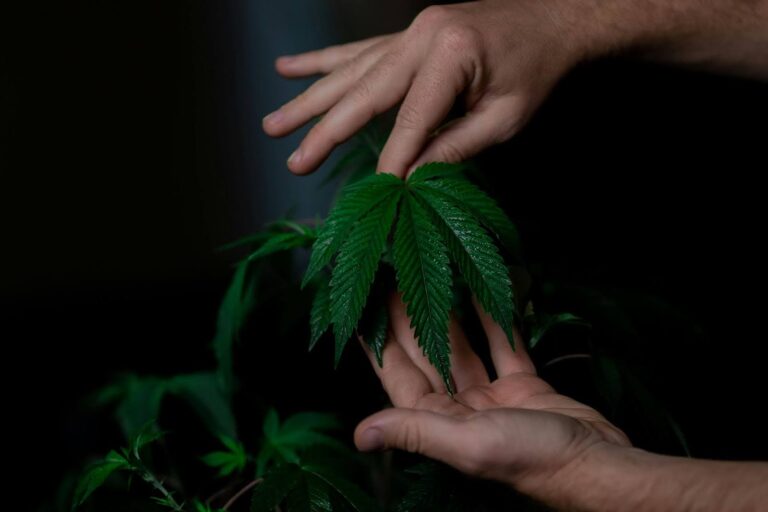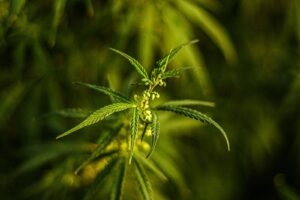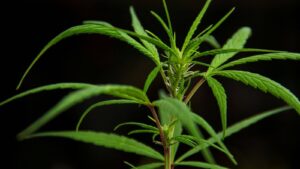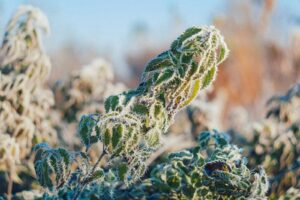Have you ever wondered when to stop feeding nutrients to your cannabis plants to achieve optimal results? This is a critical step, though often misunderstood.
Stopping nutrients too early deprives plants of critical growth elements needed for their final spurt, reducing overall yield
Conversely, feeding nutrients for too long can lead to overfeeding, nutrient burn, and a lower-quality harvest. Achieving the right balance requires understanding your plants’ life cycle, observing physical cues, and adjusting your approach.
You can ensure a successful harvest by carefully monitoring plant signals, checking trichomes, and following best practices for nutrient management.
Let’s explore the key insights, signs, and strategies for halting your nutrient regimen at the perfect time to produce top-quality cannabis that stands out in potency and flavor.
Reasons to Halt Nutrient Regimen In Cannabis
Feeding your cannabis plants nutrients for too long can lead to unnecessary complications, so it’s essential to stop at the right time. Overfeeding is one of the most common issues growers face. It happens when plants are given more nutrients than they need, leading to nutrient burn and lockout problems.
- Nutrient Burn: Extra nutrients accumulate in the plant and turn the ends of the leaves brown or crispy. This can alter the plant’s appearance and hinder photosynthesis, impacting growth.
- Nutrient Lockout: When the soil becomes saturated, the plant cannot absorb all the necessary nutrients. This can lead to stunted growth and lower-quality harvests.
- Soil Imbalance: Overfeeding can disrupt the natural pH balance of the soil, making it difficult for plants to absorb what they really need.
- Increased Pest and Mold Risk: Excess nutrients, especially nitrogen, can attract pests and increase the likelihood of mold and mildew forming on your plants.
As you’ve seen, the decision to halt nutrients plays a pivotal role in ensuring healthy plants and a bountiful harvest. Timing is everything.
Now that you understand why this step matters, it’s time to learn how to identify the signs your plants are ready for the next stage.
Signs It's Time to Stop Nutrients In Cannabis
Knowing when to stop nutrients requires observing your plants closely and recognizing the signals they provide. This ensures you smoothly transition into the flushing phase without harming the plant. Look for these signs:
Changes in Color and Texture of the Leaves:
When the leaves start to turn yellow, especially at the base of the plant, or if they begin to curl, this often indicates that the plant does not require further nutrition.
This usually means the plant is diverting its energy toward flower maturation. This yellowing often begins with the older, lower leaves because the plant is naturally concentrating its resources on the development of buds.
Trichome examination:
Trichomes are a very reliable determinant of plant readiness. Examine their color and texture under magnification. Clear trichomes indicate immature plants, cloudy ones show peak potency, and amber suggests a more sedating effect.
Ideally, it should be checked in trichomes in multiple plant areas because maturation can vary slightly across buds.
Pistil development:
Check out the pistils on your buds. When pistils turn dark from white to reddish-brown and curve inward, it is a sign that a plant is ripe for harvest or that its nutrients should be stopped altogether. Swelling is another characteristic of nearly readiness that might also indicate this.
Overall Plant Behavior:
Observe the overall growth of the plant. If it has stopped producing new leaves and its energy seems focused solely on bud development, then that is another sign that nutrient feeding should cease.
In addition, the plant may show a slower uptake of water, which signals that it is in its final stages of growth.
By identifying these visual and behavioral cues, you can timely stop nutrient feeding and ensure a cleaner, more flavorful harvest.
Is your cannabis plant showing signs of slow development? When your plants stop producing new leaves and focus solely on bud development, it’s a sign to stop nutrient feeding. Slower water uptake also indicates the final growth stages. With PlanaCan, you can track each harvest, capture key decisions, and refine your processes for higher yields and greater profits.
So, what are the risks of overfeeding your cannabis plant? Let us find out.
Risks of Overfeeding Cannabis
Overfeeding cannabis can be worse than beneficial for your plants and can negatively affect the quality of your final product. Let’s discuss the risks.
Visible Damage to Leaves:
Nutrient burn is one of the earliest signs of overfeeding. You’ll notice the tips of the leaves turning brown or curling, which reduces their ability to process sunlight effectively. This damage forces the plant to expend energy on repair instead of bud growth.
Nutrient Lockout:
High amounts of fertilizers create a nutrient lockout, preventing the plant from absorbing key elements. As a result, the leaves are yellow, and the plant is not very strong.
Flavor and Aroma Lost:
Leftover salts and chemicals left by unused fertilizers also damage the flavor and aroma of the plant, causing less enjoyable products.
Low Potency:
Overfeeding affects the production of cannabinoids and terpenes, affecting the plant’s overall potency and value.
Timing is the key to not falling into such pitfalls and ending up with high-quality cannabis that is flavorful, potent, and smooth to smoke.
Now, let us understand how nutrient burn occurs in your cannabis. Here’s how.
Understanding Nutrient Burn In Cannabis
Nutrient burn occurs when your cannabis plants receive more nutrients than they can handle, causing visible and internal damage. Here’s how to recognize and address it:
Visible Symptoms:
The first signs usually appear on the leaves. Look for browning or curling at the tips, which may spread to other parts of the plant.
These symptoms indicate that the plant is struggling to cope with the excess nutrients. In severe cases, yellowing can also occur, further signaling stress.
Impact on Growth:
Beyond leaf damage, nutrient burn disrupts the plant’s ability to absorb water and minerals effectively.
Stressed roots struggle to support the plant, leading to stunted growth and smaller, less robust buds. This issue can significantly affect the plant’s overall vitality and resilience.
Quality Issues:
Excess nutrients leave chemical residues in the plant, changing the final product’s taste, aroma, and smoothness. Overfeeding can also impact cannabinoid production, lowering the potency of the final harvest.
Recovery Challenges:
Plants suffering from nutrient burn take longer to recover, delaying the growing process and potentially pushing back harvest timelines. This makes prevention and early intervention even more important.
Is your cannabis plant suffering from nutrient burn? Track every harvest with PlanaCan and capture key decisions and their impact. With all your data in one place, you can find successful methods, avoid past mistakes, and refine your processes to prevent issues such as nutrient burn and increase yields and profits.
How to Prevent Nutrient Burn
Preventing nutrient burn is about the balance of a careful observation of your plant needs. Here’s how to allow for proper growth and avoid some mistakes:
- Lightly feed and increase slowly as the plant grows, following the reaction so that you wouldn’t give more than the needed amount so as not to overwhelm your plant at any time.
- EC (electrical conductivity) meters and TDS meters can measure the levels of nutrients in the soil or water to ensure that they do not exceed optimal levels.
- Observe the pH of your water and soil. Improper levels will exacerbate nutrient problems and hinder absorption.
- Flush your plants with clean, pH-balanced water if you see early signs of burn to remove excess nutrients and allow the roots to recover efficiently.
- Rotate nutrient types or use organic fertilizers to reduce the risk of salt buildup and promote healthier soil over time.
Now, let us understand all about flushing your cannabis before harvest. Here’s what and when to do.
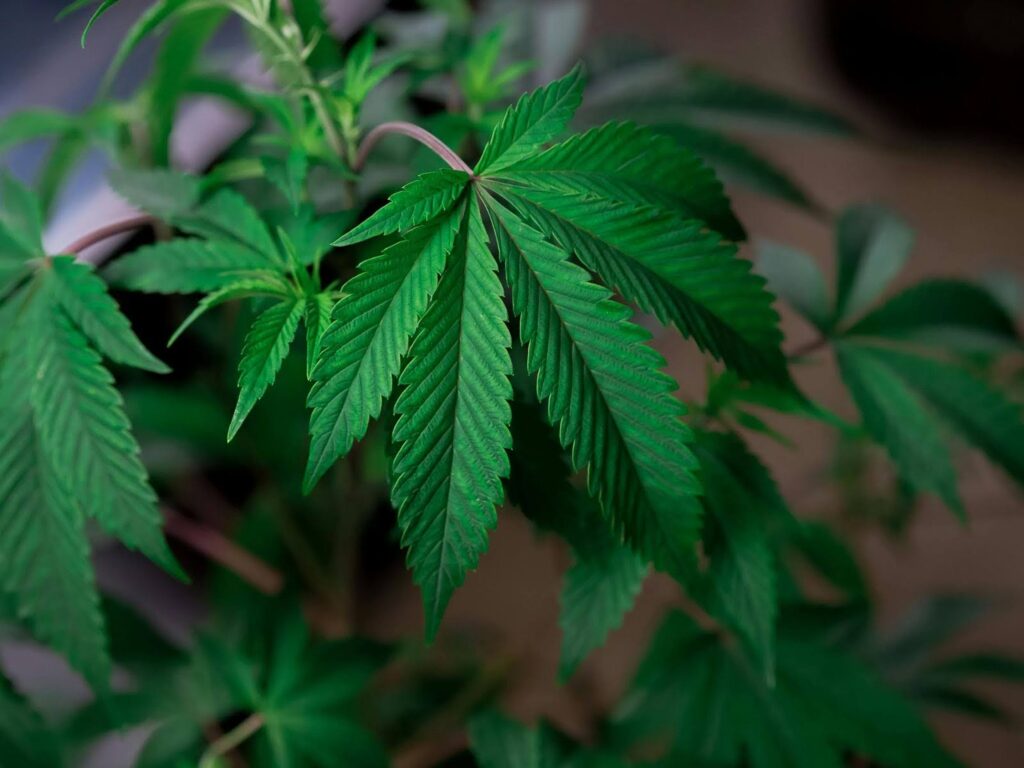
Flushing Period Before Harvest
This step is crucial for preparing your cannabis plants for harvest. Flushing involves giving the plants plain, pH-balanced water to wash out excess nutrients over a set period.
This process will remove residual nutrients from the buds so they don’t have a harsh chemical aftertaste. This process directly affects the flavour, aroma, and smoothness of the cannabis, thereby making it more palatable for consumers.
Why Flush?
Improves Flavor and Aroma: Flushing removes remaining nutrients that will otherwise affect your cannabis by hindering its taste and aroma.
Without flushing, the buds will have a harsh chemical aftertaste that ruins the experience.
Promotes Smoothness: Well-flushed buds consume more smoothly.
In other words, they burn cleanly while providing better smoking or vaping experiences.
This is because they remove the harsh chemical aftertaste from excess nutrients.
Promotes Cleaner Ash: Flushes cannabis leaves mostly white ash rather than the dark tar-like residues associated with unflushed cannabis.
It means the product is cleaner.
Reduces Chemical Residue: Flushing removes all the chemical residues, such as from fertilizers and synthetic nutrients, thus ensuring that the final product is healthy.
Improves Storage and Shelf Life: Well-flushed cannabis degrades and off-flavours much less readily than unflushed cannabis.
Environmental Benefits: The flush uses straight water, which minimizes nutrient runoff into the environment, making the process more environmentally friendly.
When to Flush?
Hydroponic Systems: In a hydroponic system, flushing might take fewer days (as little as 5–7 days) as plants absorb water directly.
The temperature of the water, the speed or rate of water circulation, and the composition of the nutritional solution all influence the number of days needed for the flush. In general, regular follow-up is done to ensure successful flushing.
Indoor vs. Outdoor Grows: Outdoor plants may need a little longer flushing because the natural soil environment takes longer to break down nutrients. Weather conditions like rain, drought, or extreme temperature fluctuations can also affect flushing.
The grower must adjust the timing according to environmental cues and soil testing.
What to Watch During Flushing?
Water Quality: To avoid further stressing the plant, ensure the flushing water is free from contaminants and has a balanced pH.
Use distilled or filtered water to eliminate any impurities interfering with flushing.
Plant Response: Look for leaves that are naturally yellow during the flush. This indicates that the plant is using up stored nutrients, which is a positive sign that it is transitioning properly.
Runoff Water: Check the runoff water for the flushing process to confirm that the EC values are declining, which means excess nutrients are being flushed out of the soil.
Consistent Watering: Ensure consistent watering throughout the flushing cycle to avoid overwatering or underwatering, as this will stress the plant.
Soil Aeration: Keep the soil aerated so that waterlogging is avoided in dense soil mediums during the flushing cycle.
Leaf Health: While yellowing is natural, monitor for signs of over-flushing, such as excessive wilting or brittle leaves, which can indicate stress.
Smell Development: Observe your plants’ aromas. Flushing can often bring out the plant’s natural terpenes more distinctly, signaling improved quality.
Nutrient Testing: If you’re growing in a hydroponic system, test the reservoir regularly to confirm that nutrient levels are approaching zero.
Temperature and Humidity: Keep the surrounding environment stable during the flushing period. Sudden temperature or humidity fluctuations can stress the plants and interfere with their flushing.
Flower Density: Monitor the density of the buds as they may continue growing slightly during the flush. It is a good indicator that the plant is still developing.
Pest Control: In the flushing phase, the weakened plants are more prone to pests. Monitor them closely for any sign of infestation to save your harvest.
Light Intensity: Give the plants adequate light during the flush but avoid increasing the intensity as it might add stress to the plants.
Water Temperature: Use water at room temperature, as the roots do not like sudden changes. Cold and hot water shock the plant and prolong the flushing process.
Monitor the density of the buds since they may continue growing slightly during the flush. You should stay on top of your cultivation tasks. PlanaCan helps you plan your cannabis yield for months ahead while efficiently managing daily tasks.
Adjust schedules as needed and keep all cultivation information in one place, ensuring no task is missed, and your plants continue to thrive throughout their development.
It will flush out your plants and allow you to trace the maturity level of your crops, ensuring a smoother, tastier, and more potent harvest.
Conclusion
Mastering the fine art of knowing when to stop nutrients on cannabis helps achieve ideal growth and results in a high-quality harvest.
By paying close attention to visual signs, understanding the plant’s maturity, and incorporating a flushing period, you avoid nutrient burn and allow your cannabis plants to thrive better. The care you invest in these final stages will produce a superior product.
PlanaCan enhances cannabis cultivation by streamlining processes and maximizing yields. It allows growers to automate tasks using customizable templates, covering every stage from planting to harvest. This automation ensures a consistent workflow and efficient management of daily activities while providing a visual timeline for task scheduling. Additionally, PlanaCan centralizes critical information, enabling all team members to stay informed about their responsibilities.
Experience a more organized and productive cultivation process with PlanaCan.
Schedule a free call today to see how we can help you optimize your cannabis crop management.

